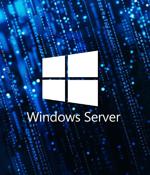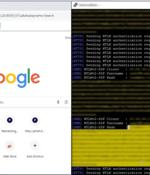Security News

Microsoft has fixed a known issue causing NTLM authentication failures and domain controller reboots after installing last month's Windows Server security updates. [...]

Microsoft has confirmed customer reports of NTLM authentication failures and high load after installing last month's Windows Server security updates. According to a new entry added to the Windows health dashboard on Tuesday, this known issue will only affect Windows domain controllers in organizations with a lot of NTLM traffic and few primary DCs. The list of impacted Windows versions and buggy security updates includes Windows Server 2022, Windows Server 2019, Windows Server 2016, Windows Server 2012 R2, Windows Server 2012, Windows Server 2008 R2, and Windows Server 2008.

What organizations need to know about the Digital Operational Resilience ActIn this Help Net Security interview, Kris Lovejoy, Global Security and Resilience Leader at Kyndryl, discusses the impact of the Digital Operational Resilience Act on organizations across the EU, particularly in ICT risk management and cybersecurity. Cisco patches Secure Client VPN flaw that could reveal authentication tokensCisco has fixed two high-severity vulnerabilities affecting its Cisco Secure Client enterprise VPN and endpoint security solution, one of which could be exploited by unauthenticated, remote attackers to grab users' valid SAML authentication token.

A threat actor specializing in establishing initial access to target organizations' computer systems and networks is using booby-trapped email attachments to steal employees' NTLM hashes. "User authentication in Windows is used to prove to a remote system that a user is who they say they are. NTLM does this by proving knowledge of a password during a challenge and response exchange without revealing the password to anyone," Microsoft said in a recent post that announced their goal to deprecate NTLM use in favor of Kerberos - a more modern, extensible and secure authentication protocol.

The threat actor known as TA577 has been observed using ZIP archive attachments in phishing emails with an aim to steal NT LAN Manager (NTLM) hashes. The new attack chain “can be used for...

The hacking group known as TA577 has recently shifted tactics by using phishing emails to steal NT LAN Manager authentication hashes to perform account hijacks. NTLM hashes are used in Windows for authentication and session security and can be captured for offline password cracking to obtain the plaintext password.

Russian state-sponsored actors have staged NT LAN Manager (NTLM) v2 hash relay attacks through various methods from April 2022 to November 2023, targeting high-value targets worldwide. The...

A now-patched security flaw in Microsoft Outlook could be exploited by threat actors to access NT LAN Manager (NTLM) v2 hashed passwords when opening a specially crafted file. The issue, tracked...

Beyond blockchain: Strategies for seamless digital asset integrationIn this Help Net Security interview, Jean-Philippe Aumasson, CSO at Taurus, emphasizes the often-overlooked complexities of key generation, storage, and distribution, underlining the necessity for a high level of security maturity in handling digital assets. Attackers can steal NTLM password hashes via calendar invitesA recently patched vulnerability in Microsoft Outlook that can be used by attackers to steal users' NTLM v2 hashes can be exploited by adding two headers to an email carrying a specially crafted file, security researcher Dolev Taler has shared on Friday.

A recently patched vulnerability in Microsoft Outlook that can be used by attackers to steal users' NTLM v2 hashes can be exploited by adding two headers to an email carrying a specially crafted file, security researcher Dolev Taler has shared on Friday. He and his colleagues from Varonis Threat Labs have revealed two additional ways attackers can get users' NTLM v2 hashes and use them for offline brute-force or authentication relay attacks.